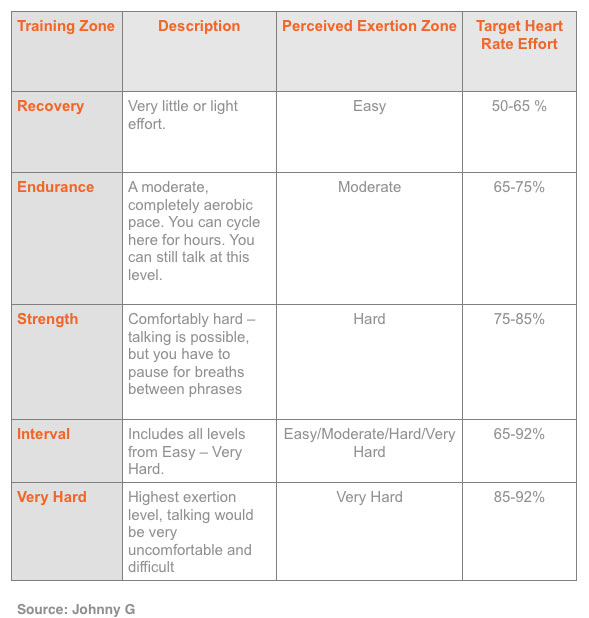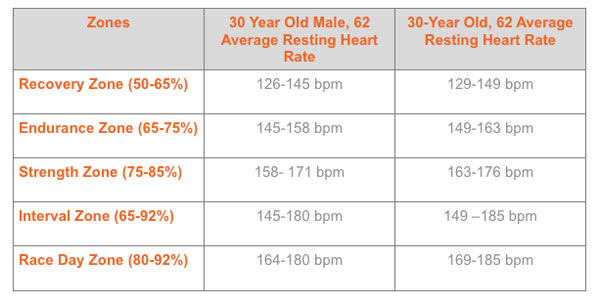TARGET HEART RATE TRAINING
Target heart rate training (HRT) is an excellent way to improve performance, track your progress and avoid over training. It is popular because it is easy to monitor and for most athletes, if offers a practical way to measure exercise intensity.
Some people are hesitant to using heart rate training, preferring to rely on subjective methods of perceived exertion. However, studies have shown that using subjective methods alone can cause people to exceed their heart rate zones during training, especially when:
- using caffeine and other stimulus which may mask fatigue and allow the person to push harder than is appropriate
- participating in group workouts where the participate is urged to keep up a pace set by more fit people
Equipment Needed
In order to follow a customized training program, you’ll need a heart rate monitor that allows you to track your heart rate during your workout. Most consist of a watch, chest strap and includes the ability to upload your results into a software program or 3rd party website for tracking all aspects of your training, such as TrainingPeaks
Heart Rate Training Zones
There are 5 training zones with each one having their own specific target heart rate range: Recovery, Endurance, Strength, Interval and Race Day.
Which zone an athlete trains in and for how long depends on their current fitness level, experience and athletic goals.
All effort is expressed in terms of a formula involving a maximum heart rate, rather than perceived exertion.
There are 2 methods for your calculating target heart rates for each zone.
Beginner Athletes
Age-Predicted Maximum Heart Rate - a linear calculation which takes into account your age
Step 1: Subtract your age from 220 (male) or 226 (female)
Step 2: Calculate your heart rate zones by multiplying the exercise intensity level (e.g. 190 x .50) by your predicted maximum heart rate.
Using the example of a 30-year male and female, below are the target heart rate zones:
CAUTION: The downside with this calculation is compared to other clinical and scientific methods, your predicted maximum heart rate can be off 12-14 beats per minute.
Intermediate Athletes
As you become more fit and increase your performance, other methods for calculating your target heart rate zones are available including the Karvoven Method which factors in your average resting heart rate, as well as age.
Step 1: Calculate your age-predicted maximum heart rate (as shown above) by subtracting your age from 220 (male) or 226 (female)
Step 2: Subtract your average resting heart rate from your age-predicted maximum heart rate. Your average resting heart rate is the rate you’ve recorded 5 consecutive mornings, before getting out of bed.
Step 3: Multiple the number from above, by the exercise intensity level
Step 4: Add back in your average resting heart rate
Examples:
Male, 30 year old, average resting hear rate of 62
220-30 = 190 (age-predicted maximum heart rate)
190-62 (average resting heart rate) = 128
128 x .75 (exercise intensity) = 96
96 + 62 = 158
Female, 30 years old, average resting heart rate is 62
226-30 = 196 (age-predicted maximum heart rate)
196-62 (average resting heart rate) = 134
132 x .75 (exercise intensity) = 101
100 + 62 =163
Both heart rate calculation methods are supported by Can-Fit Pro.
Whichever target heart rate method you choose, be consistent for maximum benefits.
![]()







